Move Over, 'Game of Thrones,' Here Are 9 Real-Life 'Dragons'
Mother of Dragons
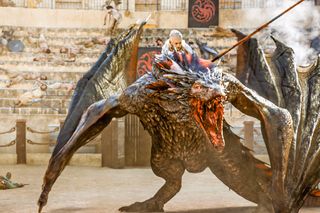
The fantasy series "Game of Thrones" returns to HBO tonight (April 24) with its much-anticipated Season 6, promising a headlong plunge into scenes of deadly peril, serpentine intrigue, betrayal and perhaps just a little violence.
And, of course, dragons. Central to one of the show's main storylines is the fate of Daenerys Targaryen and her dragons — Drogon, Rhaegal and Viserion — which are, as far as anyone knows, the last of their kind in all of the Seven Kingdoms of Westeros.
While fire-breathing creatures big enough for people to ride are a fantasy-fiction staple, they're in short supply in the real world. But there are certain animals with features that call to mind the majestic — and terrifying — reptile-like "children" of the Khaleesi.
Live Science takes a look at a few of these real-world "dragons" — some of which are alive today, while others are long extinct.
Sea dragon
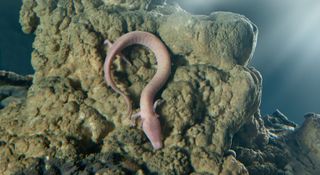
Meet the olm (Proteus anguinus), a blind, cave-dwelling salamander from Slovenia that measures about 16 inches (40 centimeters) in length. The olm is also known locally as the "sea dragon" and, paradoxically, as the "human fish," due to its pinkish-white coloration. The frilled, pink salamanders were actually mistaken for baby dragons centuries ago, by people who found the olms after rain had washed them from their cave habitats.
The next real-life dragon would likely have made even Drogon shiver. Read on.
'Bat dinosaur'
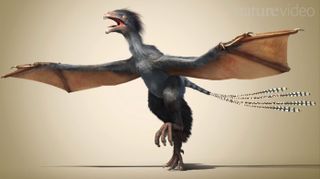
Birds alive today are living dinosaurs, but a bizarre dinosaur that lived in China 160 million years ago had bat-like wings that made it resemble a mythical dragon more than a modern bird. Though Yi qi (pronounced "ee chee") had feathers on its body, its wings were made of a membrane supported by extended fingers, and paleontologists suggest that it probably flapped and glided, much like a flying squirrel. [See Images of the Bizarre 'Dinosaur Dragon']
Next up? A dragon that was tiny but mighty. Check it out for yourself.
Flying dragons
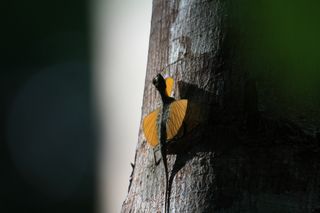
These tiny lizard gliders don’t have true wings. Rather, their elongated ribs spread outward, stretching folds of skin tightly to form colorful panels. The miniature "dragons" climb trees in their jungle habitats of southern India and southeast Asia, jumping and opening their skin "sails" to help them glide safely to another tree or to the ground.
Even mighty Balerion, Daenerys's grandfather's dragon, would admit that the next reptile on our list is pretty scary looking.
Bearded dragon
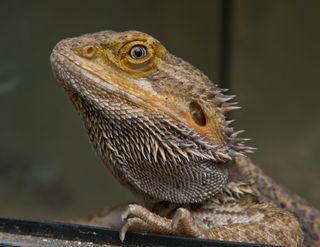
A carpet of spikes lining the head and throat of a bearded dragon (Pogona vitticeps) make it appear almost too dangerous to touch, but these lizards are actually quite popular as pets. Native to Australia, they come in a variety of hues — much like the different-colored "Game of Thrones" dragons — but are much easier to raise indoors.
Avatar dragon
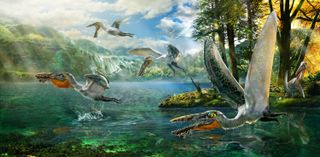
The unusual head of this pterosaur reminded paleontologists of the fictional, flying "ikran" creatures in the "Avatar" movie, but the scientists also included a nod to dragons in the pterosaur's scientific name, Ikrandraco avatar (in Latin, "draco" translates as "dragon.") The so-called Avatar dragon, which lived in China about 120 million years ago, may have preyed on fish by flying low over freshwater lakes and scooping them up with its mouth.
The next dragon on our list would give Rhaegal a run for its money in the looks department.
Frilled lizard

Australia's frilled lizards exhibit a truly bizarre behavior when threatened — they expand their neck frill like an umbrella, hopefully startling a predator long enough for the lizard to make a quick escape. The sight of one of these lizards running full-tilt on its hind legs with mouth gaping and its frill at maximum extension may recall an attacking dragon ready to bathe its enemies in fire. Of course, in reality, the lizard is retreating to safety as fast as it can.
Welsh dragon
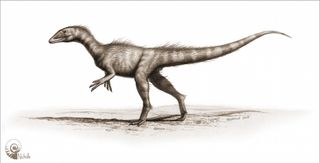
Fossils of this meat-eating T. rex cousin were found in Wales in 2014. Estimated to be about 201 million years old, it is thought to be the earliest Jurassic dinosaur ever unearthed in the U.K. The first part of the specimen's name, Dracoraptor hanigani, translates to "dragon raptor," a nod to Wales' national symbol — the dragon.
The next dragon would fit right in with Daenerys Targaryen's gang. Can you guess what it is?
Komodo dragon
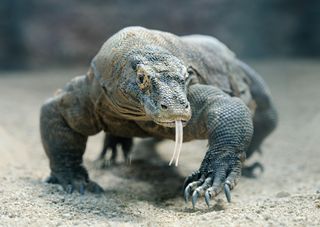
Komodo dragons (Varanus komodoensis) are the behemoths of the "dragons" alive today. Adult males can measure up to 10 feet (3 meters) in length and weigh more than 200 pounds (91 kilograms). They even sport armor like fabled dragons, with bony plates called osteoderms protecting their bodies.
Woodlizards
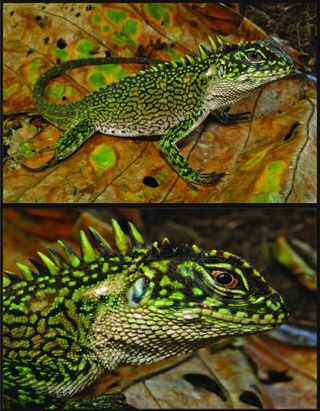
These colorful critters with impressive, dragon-like spikes lining their backs were discovered in northeastern Peru's Cordillera Azul National Park in 2013. They belong to the woodlizard group, and their coloration may help camouflage them from predators amid the rainforest vegetation.
Want more? Read about fantastic dragons in legends and folklore.
Sign up for the Live Science daily newsletter now
Get the world’s most fascinating discoveries delivered straight to your inbox.

Mindy Weisberger is an editor at Scholastic and a former Live Science channel editor and senior writer. She has reported on general science, covering climate change, paleontology, biology, and space. Mindy studied film at Columbia University; prior to Live Science she produced, wrote and directed media for the American Museum of Natural History in New York City. Her videos about dinosaurs, astrophysics, biodiversity and evolution appear in museums and science centers worldwide, earning awards such as the CINE Golden Eagle and the Communicator Award of Excellence. Her writing has also appeared in Scientific American, The Washington Post and How It Works Magazine.
